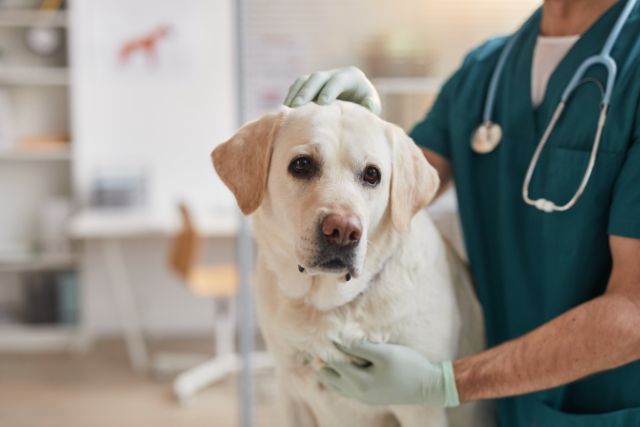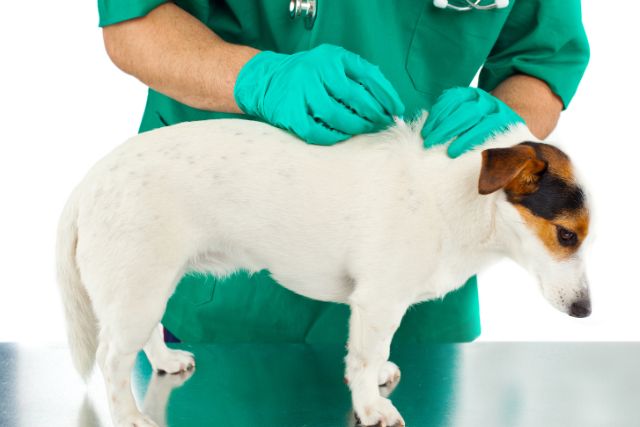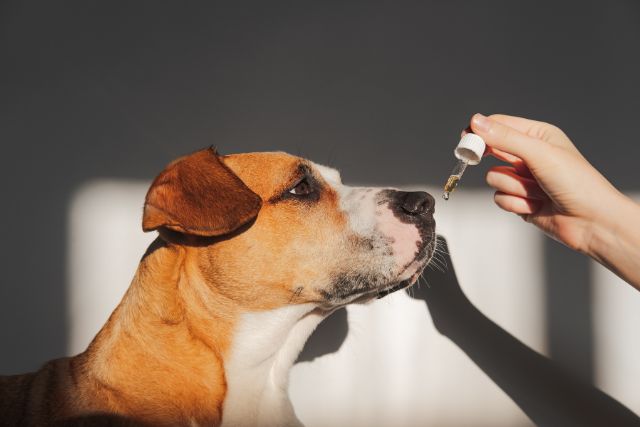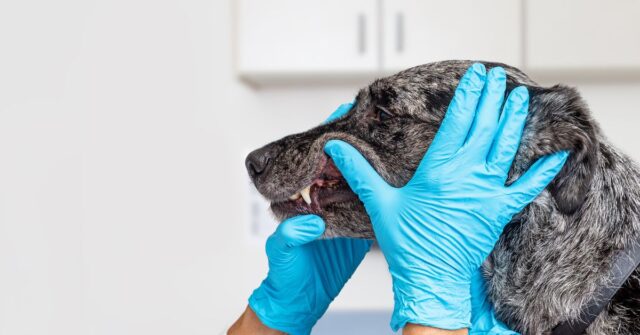Seasonal allergies in dogs are a prevalent issue that many pet owners face, particularly during certain times of the year when allergens are at their peak.
This comprehensive guide will help you understand what to look for, how to manage symptoms, and the best ways to keep your furry friend comfortable and healthy.
Introduction to Seasonal Allergies in Dogs
Dogs, much like humans, can suffer from seasonal allergies. These allergies are typically triggered by environmental factors such as pollen, mould, and dust mites.
Recognizing the signs early and taking appropriate steps can significantly improve your dog’s quality of life.


Understanding Seasonal Allergies
Seasonal allergies, also known as atopic dermatitis, occur when a dog’s immune system overreacts to substances in the environment.
These substances, or allergens, are usually harmless but can cause significant discomfort for dogs with sensitive immune systems.
Common allergens include pollen from trees, grasses, and weeds, as well as mould spores and dust mites.
Why Seasonal Allergies Occur
Seasonal allergies occur because of an overactive immune response. When a dog inhales or comes into contact with allergens, their immune system mistakenly identifies these substances as threats.
This leads to inflammation and a variety of symptoms, primarily affecting the skin, respiratory system, and sometimes the gastrointestinal tract.
Common Symptoms of Seasonal Allergies in Dogs
Identifying the symptoms of seasonal allergies is crucial for early intervention and management.
Dogs exhibit a range of symptoms, many of which are similar to those seen in humans with hay fever or other allergies.
Behavioural Symptoms
Behavioural changes can be one of the first signs of seasonal allergies in dogs. These changes are often due to the discomfort and irritation caused by allergens.
Excessive Licking and Scratching
One of the most common symptoms is excessive licking and scratching, particularly of the paws, face, and belly. Dogs may also chew on their skin and fur, leading to bald spots and sores.


Changes in Behavior
You might notice your dog becoming more irritable or restless due to the constant discomfort. Some dogs may also become less active or withdraw from activities they usually enjoy.
Physical Symptoms
In addition to behavioural changes, seasonal allergies can cause a variety of physical symptoms. These symptoms can range from mild to severe and often require veterinary intervention.
Red, Inflamed Skin
Inflammation and redness of the skin are common. Affected areas often include the paws, ears, belly, and around the eyes. The skin may become itchy, leading to more scratching and potential infections.
Hair Loss
Hair loss, particularly in areas where the dog has been licking or scratching excessively, is another common symptom. This can lead to patches of baldness and sores on the skin.
Watery Eyes and Runny Nose
Just like humans, dogs can experience watery eyes and a runny nose due to seasonal allergies. You might also notice your dog sneezing more frequently during allergy season.
Chronic Ear Infections
Allergies can cause chronic ear infections, which may lead to head shaking, ear scratching, and a foul odor from the ears. These infections can be painful and often require veterinary treatment.
Coughing and Sneezing
While less common, some dogs may develop coughing and sneezing as a result of inhaled allergens. This can sometimes be mistaken for a respiratory infection.


Causes of Seasonal Allergies in Dogs
The primary cause of seasonal allergies in dogs is exposure to environmental allergens. Understanding these triggers can help you take preventative measures.
Environmental Allergens
Environmental allergens are the most common culprits of seasonal allergies. These include pollen, mold spores, and dust mites.
Pollen from Trees, Grasses, and Weeds
Pollen is one of the most common allergens and can come from a variety of sources, including trees, grasses, and weeds.
Seasonal changes, particularly in spring and fall, can lead to higher pollen counts and more severe allergic reactions.
Moulds and Fungi
Mould spores thrive in damp environments and can become airborne, leading to inhalation by dogs. This is particularly common in humid or rainy seasons.
Dust Mites
Dust mites are microscopic organisms that live in household dust. They can be found in bedding, carpets, and upholstery, and are a common year-round allergen.
Genetic and Immune System Factors
Some dogs are genetically predisposed to allergies, meaning they inherit the tendency from their parents.
Breeds such as Terriers, Setters, Retrievers, and Bulldogs are more prone to developing allergies. Additionally, dogs with weaker immune systems are more susceptible to allergic reactions.


Diagnosing Seasonal Allergies
Accurate diagnosis of seasonal allergies is essential for effective treatment. This typically involves a combination of physical examinations, medical history, and allergy testing.
Veterinary Examinations
A visit to the veterinarian is the first step in diagnosing seasonal allergies. The vet will conduct a thorough physical examination and review your dog’s medical history to identify patterns and potential triggers.
Physical Exams
During a physical exam, the vet will look for signs of allergies such as red, inflamed skin, ear infections, and hair loss.
They may also check for other conditions that could cause similar symptoms, such as parasites or infections.
Allergy Testing
Allergy testing can help identify specific allergens. This can be done through blood tests or intradermal skin tests, where small amounts of potential allergens are injected into the skin to observe reactions.
Ruling Out Other Conditions
Before confirming a diagnosis of seasonal allergies, it’s important to rule out other conditions that could cause similar symptoms. These might include food allergies, flea allergies, or skin infections.


Treatment and Management of Seasonal Allergies
While there is no cure for seasonal allergies, there are various treatments and management strategies that can help alleviate symptoms and improve your dog’s comfort.
Medications
Medications are often the first line of defence in treating seasonal allergies. These can help reduce inflammation, itching, and other symptoms.
Antihistamines and Steroids
Over-the-counter antihistamines like Benadryl can be effective in mild cases, but always consult your vet before administering any medication.
In more severe cases, your vet may prescribe stronger medications such as corticosteroids or Apoquel.
Prescription Medications
Prescription medications, including immunotherapy (allergy shots), can be used to treat more severe allergies. These treatments involve regular injections to help build tolerance to specific allergens.


Topical Treatments
Topical treatments can provide immediate relief for itchy, inflamed skin. These include medicated shampoos, creams, and sprays.
Special Shampoos and Creams
Shampoos containing ingredients like oatmeal, aloe vera, and hydrocortisone can soothe irritated skin. These should be used regularly during allergy season to help manage symptoms.


Oatmeal Dog Shampoo for Dry Itchy Skin
Natural dog shampoo for sensitive skin to help alleviate dry itchy skin. Also pleasently scented with vanilla and coconut to leave your furry friend feeling and smelling great.
Topical Sprays
Topical sprays can provide targeted relief for specific areas of the body. These sprays often contain anti-inflammatory and antiseptic ingredients to reduce itching and prevent infections.
Environmental Control
Controlling your dog’s environment is crucial in managing seasonal allergies. This involves regular cleaning and reducing exposure to allergens.
Regular Cleaning and Maintenance
Keeping your home clean can help reduce the presence of allergens. Regularly wash your dog’s bedding, vacuum carpets and upholstery, and use air purifiers to remove airborne allergens.
Minimizing Outdoor Exposure
During high pollen times, limit your dog’s time outdoors. Wipe down their paws and coat after walks to remove any pollen or other allergens they may have picked up.
Dietary Supplements
Supplements can help boost your dog’s immune system and improve skin health. Omega-3 fatty acids are particularly beneficial for dogs with allergies.


Omega-3 Fatty Acids
Omega-3 fatty acids, found in fish oil supplements, can reduce inflammation and improve skin health. These should be given year-round for maximum benefit.
Preventive Measures
Taking preventive measures can help reduce the severity and frequency of allergic reactions in dogs. These measures include regular grooming, home cleanliness, and minimizing exposure to allergens.
Frequent Baths and Grooming
Regular baths and grooming can help remove allergens from your dog’s coat and skin. Use hypoallergenic shampoos and conditioners to avoid further irritation.
Using Hypoallergenic Shampoos
Hypoallergenic shampoos are specifically formulated to be gentle on sensitive skin and to avoid causing further irritation.
They often contain soothing ingredients such as oatmeal, aloe vera, and coconut oil, which can help to reduce inflammation and itching.


Home Cleanliness
Keeping your home clean is an essential part of managing your dog’s seasonal allergies. Dust, pollen, and other allergens can accumulate on surfaces and in fabrics, contributing to your dog’s symptoms.
Keeping Indoor Environments Allergen-Free
Regularly cleaning and vacuuming can help to reduce the number of allergens in your home. Use a vacuum cleaner with a HEPA filter to effectively capture dust and pollen.
Wash your dog’s bedding and toys frequently in hot water to kill any dust mites and remove allergens. Additionally, consider using air purifiers to reduce airborne allergens.
Outdoor Precautions
Managing your dog’s exposure to outdoor allergens is crucial, especially during peak allergy seasons. Being proactive can significantly reduce the severity of your dog’s allergic reactions.
Managing Pollen Exposure
During high pollen seasons, try to keep your dog indoors as much as possible, especially on windy days when pollen is more likely to be airborne.
After outdoor activities, wipe down your dog’s paws and coat with a damp cloth to remove any pollen they may have picked up.
Consider scheduling walks during times of day when pollen counts are lower, such as early morning or late evening.
When to See a Veterinarian
If your dog’s symptoms persist or worsen, it is important to consult with a veterinarian. Professional guidance can help to ensure that your dog receives the appropriate treatment and care.


Severe Symptoms
In some cases, dogs may exhibit severe symptoms that require immediate veterinary attention. These symptoms can include difficulty breathing, swelling, and severe itching that leads to open sores.
If you notice any of these signs, it is crucial to seek veterinary help right away to prevent further complications.
Signs of Anaphylactic Shock
Although rare, anaphylactic shock is a severe and life-threatening allergic reaction that requires emergency medical treatment.
Symptoms can include excessive drooling, seizures, vomiting, sudden diarrhea, and collapse. If your dog shows any signs of anaphylaxis, get them to a veterinarian or emergency animal hospital immediately.
Persistent Allergies
Persistent allergies that do not improve with initial treatments may indicate an underlying issue or the need for a different management approach.
Your veterinarian can conduct further tests to identify the specific allergens affecting your dog and develop a tailored treatment plan.
This may include a combination of medications, dietary changes, and lifestyle adjustments to better manage your dog’s allergies over the long term.


Conclusion
Seasonal allergies in dogs can be challenging to manage, but with the right knowledge and strategies, you can help your furry friend live a more comfortable and happy life.
By understanding the symptoms, causes, and treatments, you are better equipped to provide the care your dog needs.
Regular veterinary check-ups, proper home care, and appropriate medical treatments are key to managing seasonal allergies effectively.
Always consult with your veterinarian for the best advice and treatment options tailored to your dog’s specific needs.











